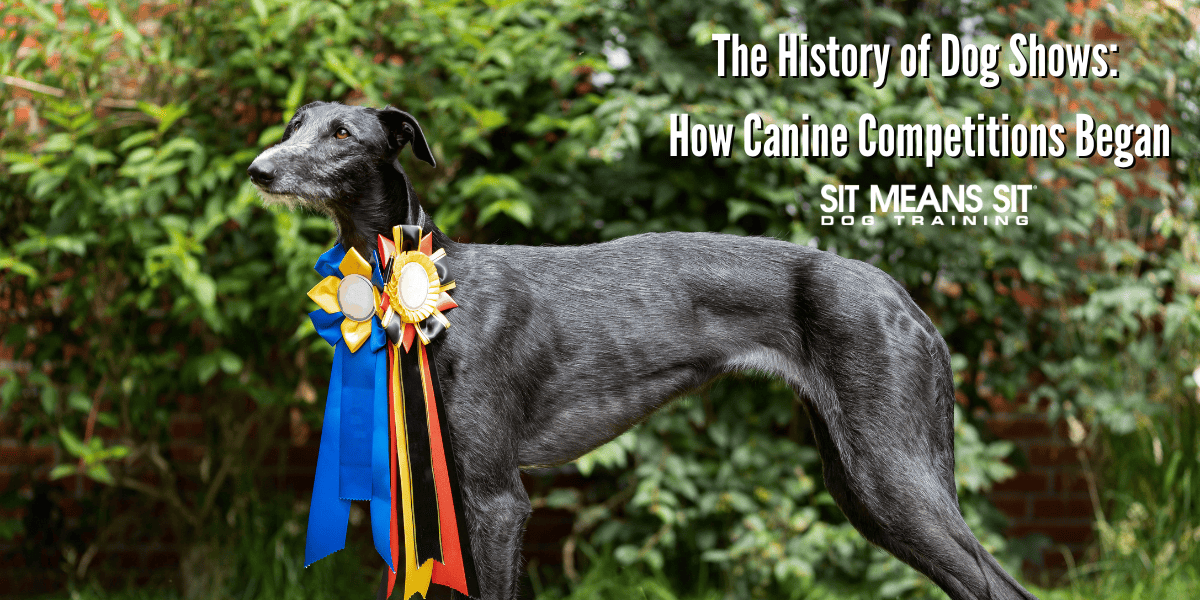From pampered poodles to prancing pointers, dog shows today are full of glamour, grace, and perfectly brushed tails. But believe it or not, the idea of judging dogs has been around for centuries, and they looked somewhat different back then. So let’s take a walk through the history of dog shows and how canine competitions began!
Ancient Beginnings
In ancient Greece and Rome, dogs weren’t judged by their looks but by their grit. Think of their dog shows less like beauty pageants and more like the canine Olympics. Crowds would gather to watch which dog could hunt with the most precision or guard with unwavering loyalty. There were no breed standards or fancy grooming, but instead raw, practical skill on full display.
The 19th Century and Modern Dog Shows
Jump ahead to Victorian England, where society was developing a real obsession with pedigree. The first organized dog show took place in Newcastle, England, in 1859. This event was small, featuring only pointers and setters, hunting dogs known for their hunting tactics. The show was intended primarily for sportsmen, and prizes were typically guns or other hunting gear. Encouraged by this success, a year later, a second show in Birmingham added more breeds, more organization, and a whole lot more attention. Suddenly, people weren’t just admiring dogs for what they could do, but how they looked doing it!
The Rise of Kennel Clubs
As interest in dog shows grew, a clear need for consistency in judging emerged. Breeders and enthusiasts began to establish written standards describing the ideal characteristics for each breed. This led to the formation of kennel clubs, which are organizations responsible for maintaining breed registries and setting competition rules. The Kennel Club in the UK was founded in 1873 to bring order to the growing dog-show world. They created the first official registry of pedigree dogs and launched what would become the world’s most famous dog show, Crufts. Eleven years later, the American Kennel Club was formed and began to write detailed breed standards, which essentially served as a checklist of everything that makes a breed “ideal.” That’s when the spotlight shifted from working ability to appearance.
From Hunters to Show-Stoppers
Over time, dog shows evolved into something much fancier. Instead of field trials and guarding tests, dogs were now judged on their posture, coat, movement, and that ever-important “look.” This gave rise to the modern conformation show, where dogs are expertly groomed, posed, and shown by trained handlers. But it’s not always about looks. Today’s dog shows often include agility courses, obedience challenges, and scent work competitions, so those ancient instincts still come in handy!
A Global Phenomenon
From its humble beginnings in 19th-century England, and even further back to ancient civilizations, dog showing has grown into a global tradition. Prestigious competitions, such as the Westminster Kennel Club Dog Show in New York City and the World Dog Show in Finland this year, draw thousands of entries and spectators each year. Beyond the glamour and ribbons, these shows play a significant role in promoting responsible breeding and preserving the diversity of dog breeds. They also serve as a testament to the centuries-long relationship between people and dogs, one built on cooperation, admiration, and mutual respect.
Check Out More from Sit Means Sit:
These Dogs Changed History
Tips for Introducing Your Dog to Your New Baby
Frozen Dog Treat Recipes to Make This Summer

